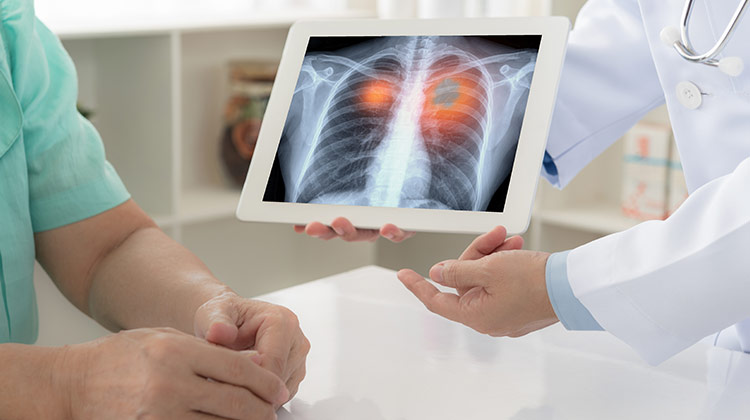Chest Diseases
 The chest diseases department, which diagnoses the diseases that occur in the lungs and respiratory tract, which is the answer to the question of what are chest diseases, also provides treatment services for these diseases. Therefore, it can be defined that this branch deals with the treatment of all respiratory and lung-related diseases.
The chest diseases department, which diagnoses the diseases that occur in the lungs and respiratory tract, which is the answer to the question of what are chest diseases, also provides treatment services for these diseases. Therefore, it can be defined that this branch deals with the treatment of all respiratory and lung-related diseases.
In addition to intraoral pressure measurements, many interventions such as reversibility and forced vital capacity testing are used in the respiratory function laboratory. Skin test is applied in diseases experienced due to allergic reasons. For this, it is acted in coordination with the department doctors.
Frequently Asked Questions
What are Pulmonary Function Tests?
The doctors of the department, who diagnose diseases such as bronchitis, asthma, tuberculosis, pneumonia, respiratory problems and sleep problems, initiate the necessary treatment process. If needed during both diagnosis and treatment, radiological imaging examinations may be required. Other techniques such as laboratory tests and diffusion testing may also be used. Specialist doctors in the field of chest diseases also support their patients with smoking addiction in the best way. Pulmonologists first look at the patient's medical history in detail. After the examination, if needed, support can be obtained from radiological imaging methods. Depending on the patient's condition, additional tests may be requested in the pulmonary function laboratory. The specialist physician determines the treatment process after making the diagnosis. The tests included in the pulmonary function test are as follows;
Slow Vital Capacity Test
A spirometer device is used to determine lung capacity. In this test, a mask is worn that covers the mouth and nose of the patient. Take a deep breath inside the mask and exhale. After this process, the device measures the amount of gas sent out. During slow breathing, the amount of air entering and leaving the lungs is learned.
Diffusion Test
A gas mixture containing helium is given to the patient through a mask. The patient inhales this gas and holds it in for 10 seconds. After the time expires, the air is expelled. In this way, the rate of gas given and taken into the lungs is compared and the gas lost is calculated.
Reversibility Test
Before this test, the drugs that the patient uses constantly are determined. Then, the reasons that obstruct the breathing and decrease the capacity are observed.
Challenging Vital Capacity Test
Thanks to this test, detailed information about the obstruction in the lungs and breathing (obstruction and conditions that prevent breathing) is collected.
Who Should Have Pulmonary Function Tests?
Pulmonary function tests are one of the most frequently applied methods. It is commonly used to determine whether the cause of shortness of breath is from the heart or lungs. These tests can also be applied to follow up the patients in the intensive care unit, to determine the obstruction (occlusion) and to learn the risks before the surgery. For the diagnosis of sleep disorders due to breathing, sleep laboratory and bronchoscopy unit and specialist doctors are closely involved in the treatment of patients. The follow-up and treatment of all lung diseases are included in the chest diseases department. Chest, back and shoulder pain, phlegm, coughing and snoring, as well as diseases that show many symptoms such as blood, sweating and fever associated with coughing are treated by specialist physicians in the chest diseases department. Some of the diseases experienced are: Lung cancer, chronic cough, asthma, COPD, pleurisy, pneumonia and various diseases related to smoking addiction…
Bronchoscopy Unit and Sleep Laboratory
Thanks to the bronchoscope device, the respiratory system is examined in detail. In this unit, people who produce sputum, who have a strange chest tomography, who have cough problems and who are suspected of cancer are examined. In the sleep laboratory, the cause of disorders such as snoring, breathlessness during sleep and sleep apnea are investigated. Patients sleep in specially prepared sleeping rooms for one night. During this period, the patient's data is continuously recorded with the camera and electrodes. According to the results, the patient is treated.
Chest diseases department is the medical branch where the diagnosis and treatment of the diseases occurring in this region anatomically are carried out. If you have any chest disease or if you observe various symptoms of these diseases, remember that you can get support from World Health's specialist physicians. We wish you healthy days.
 The chest diseases department, which diagnoses the diseases that occur in the lungs and respiratory tract, which is the answer to the question of what are chest diseases, also provides treatment services for these diseases. Therefore, it can be defined that this branch deals with the treatment of all respiratory and lung-related diseases.
The chest diseases department, which diagnoses the diseases that occur in the lungs and respiratory tract, which is the answer to the question of what are chest diseases, also provides treatment services for these diseases. Therefore, it can be defined that this branch deals with the treatment of all respiratory and lung-related diseases.



